The Pope's Climate-Change Blind Spot: Women's Rights
When women are empowered to make decisions about their lives, it's a win-win for people and the planet
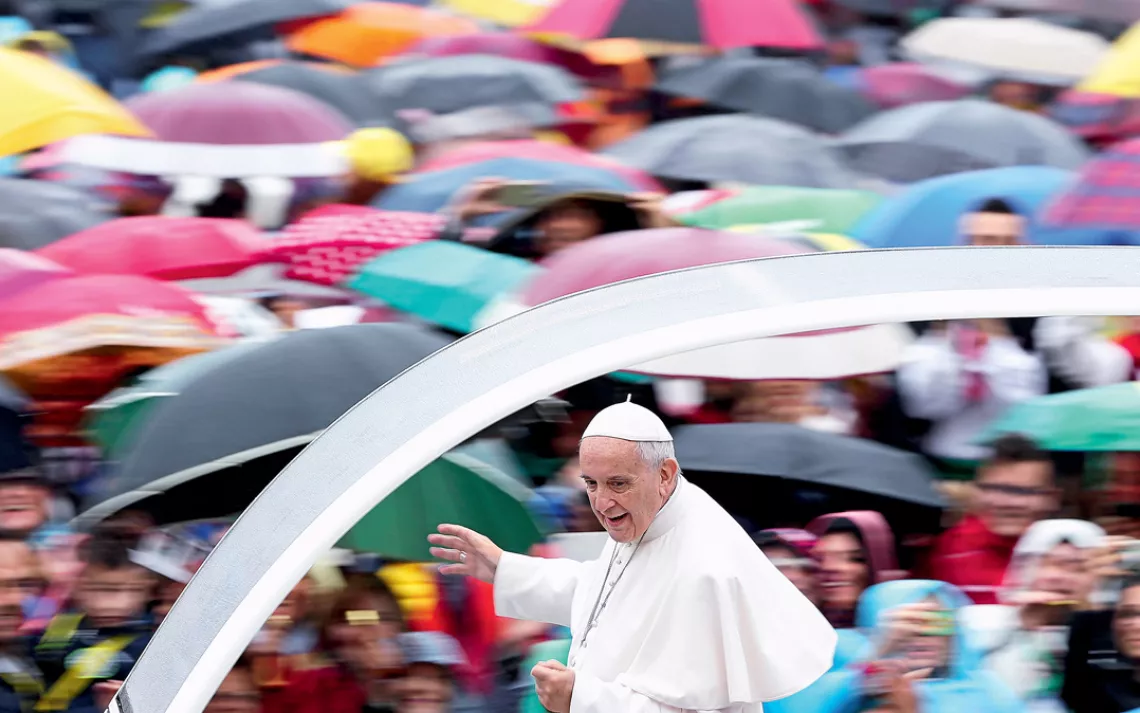
Pope Francis in St. Peter's Square at the Vatican in 2016 | Photo by Reuters/Alessandro Bianchi
A year ago in September, during his first visit to the United States, Pope Francis arrived at the White House in a black Fiat. The vehicle reflected the man—humble, accessible, and a touch subversive. Escorted by a squad of hulking, gas-guzzling government SUVs, the 30-miles-per-gallon car with a price tag in the ballpark of a Honda Civic offered a polite suggestion: It might be time to downsize, America.
Clothed in his simple white skullcap and robes, the pope greeted the president and the first lady and then addressed a crowd on the sprawling South Lawn. In his remarks, he spent more time on climate change than on any other subject.
The visit came just four months after Francis published Laudato Si'. This was the first encyclical—a letter from the pope to Catholics and others interpreting church doctrine—exclusively dedicated to an environmental issue. The document was classic Francis, its core message a plea for equity. Over 178 pages, he made an exhaustive case not only for climate action but also for climate justice—that is, solutions that reduce emissions and vast global imbalances in wealth, power, and consumption.
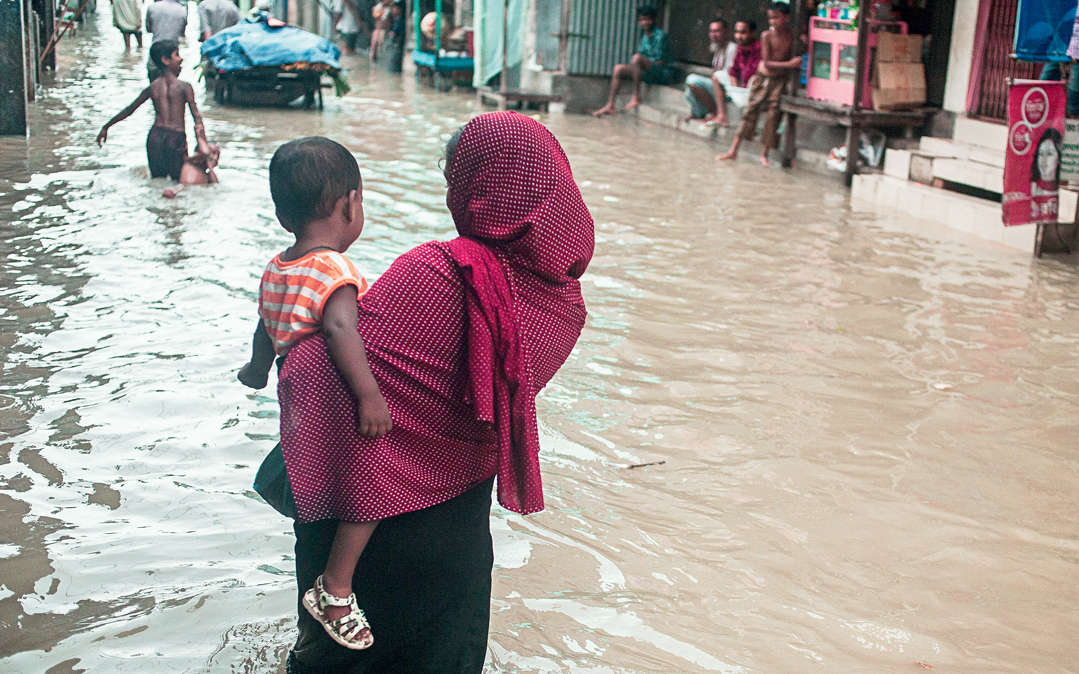
A mother and child cross a flooded street in Chittagong, Bangladesh. | Photo by Jashim Salam via ZUMA Wire
He also articulated his position on the contentious issue of population growth. People could continue to multiply and their lives could improve, he reasoned, if the rich stopped consuming so much. Any suggestion that reducing the birthrate is the solution to the climate crisis, he wrote, is an attempt by developed countries to evade responsibility for their excessive consumption.
The pope has a point. Rich nations need to kick their fossil-fueled habits. Reducing the birthrate won't solve our carbon problem because overpopulation didn't cause it. And yet population does matter. The UN projects that by 2050, our numbers could grow to 8.7 billion on the lowest end, or to 10.8 billion on the highest end. Where we end up on that spectrum will affect the global rate of emissions. Just as important, it may influence our ability to adapt to the effects of the carbon already baked into the system.
Pope Francis's argument reflects the Catholic Church's stance on contraception and abortion, but it's also a leftover reaction to the dark history of the population-control movement, says Carmen Barroso, former director of the International Planned Parenthood Federation's Western Hemisphere Region. In the 1960s and '70s, many people feared that runaway population growth would lead to famine and ecological ruin. Calls for controlling growth were primarily directed at poor countries and resulted, in some cases, in horrific violations of women's bodies and basic dignity. The worst abuses included forced sterilizations of both men and women in India beginning in the 1960s. Such atrocities are not entirely a thing of the past: Women in India are still paid by the state to be sterilized, and more than a dozen recently died in mass sterilization camps.
But globally, the politics have evolved. Barroso and others say that today it is possible to care about population and women's rights—indeed, it is essential. "There's a deep philosophical flaw if you say, 'The environment is in trouble. Women cannot have more than one or two children,'" Barroso says. "But the point is, we're in a win-win situation. If you respect women's rights, give them the resources [and] access to the means of controlling their own fertility as they wish, we also have the indirect effect of having fewer people on the planet. And that will be good for the environment."
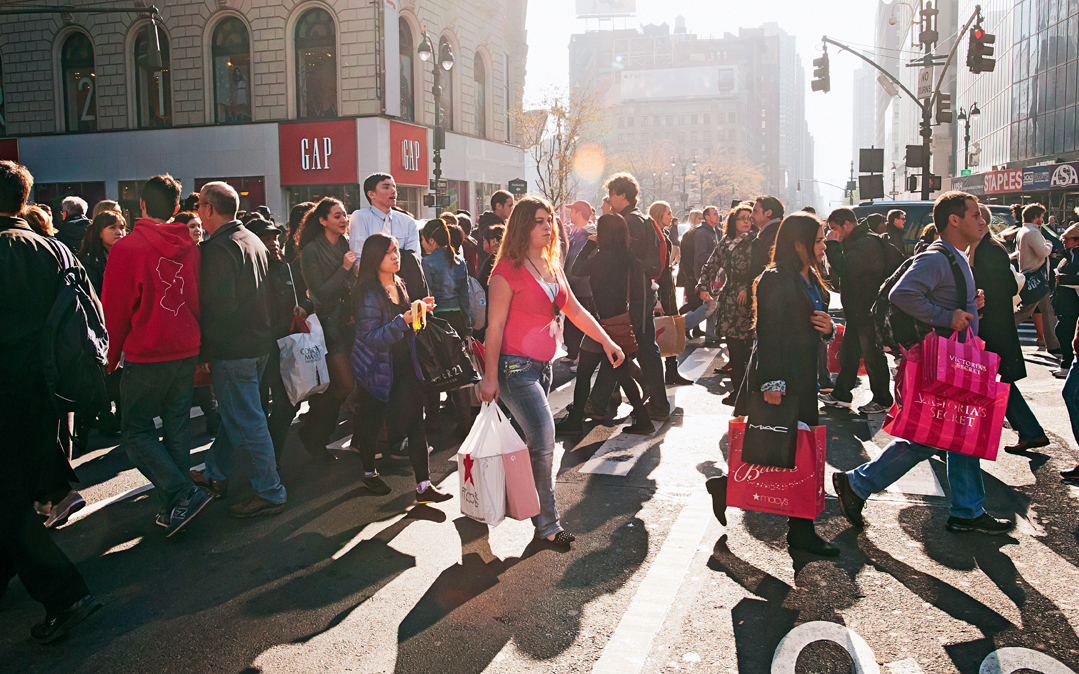
People shop on Black Friday in New York City's Herald Square. | Photo by Richard Levine/age fotostock/SuperStock

Sign up to receive Sierra News & Views
Get articles like this one sent directly to your inbox weekly.
With this action you affirm you want to receive Sierra Club communications and may vote on policy designated by the Sierra Club Board.
The population paradigm started to shift during the 1980s and gained widespread acceptance at the 1994 United Nations' International Conference on Population and Development. The Cairo conference brought together activists and 179 governments, and tasked them with developing a framework for population policy for the next 20 years. But instead of setting goals for reducing fertility rates through improved family planning—the primary focus of population work up to that point—an unlikely alliance of women's-rights and population-stabilization advocates successfully promoted an agenda that put the status of women front and center.
The alliance formed partly to address the Vatican's opposition to expanding contraception and abortion access. But Barroso says it was also born of the recognition that the goals of feminists and population-stabilization advocates could be symbiotic. The radical idea at the conference was this: If you invest in women's empowerment in a broad sense—access to education, economic opportunity, health care, and reproductive choice—slower population growth will follow.
"The answer to sustainability was not to restrict and abuse human rights," says the UN Population Fund's Daniel Schensul. It was to put women first, and trust that many indirect social and environmental benefits would accrue.
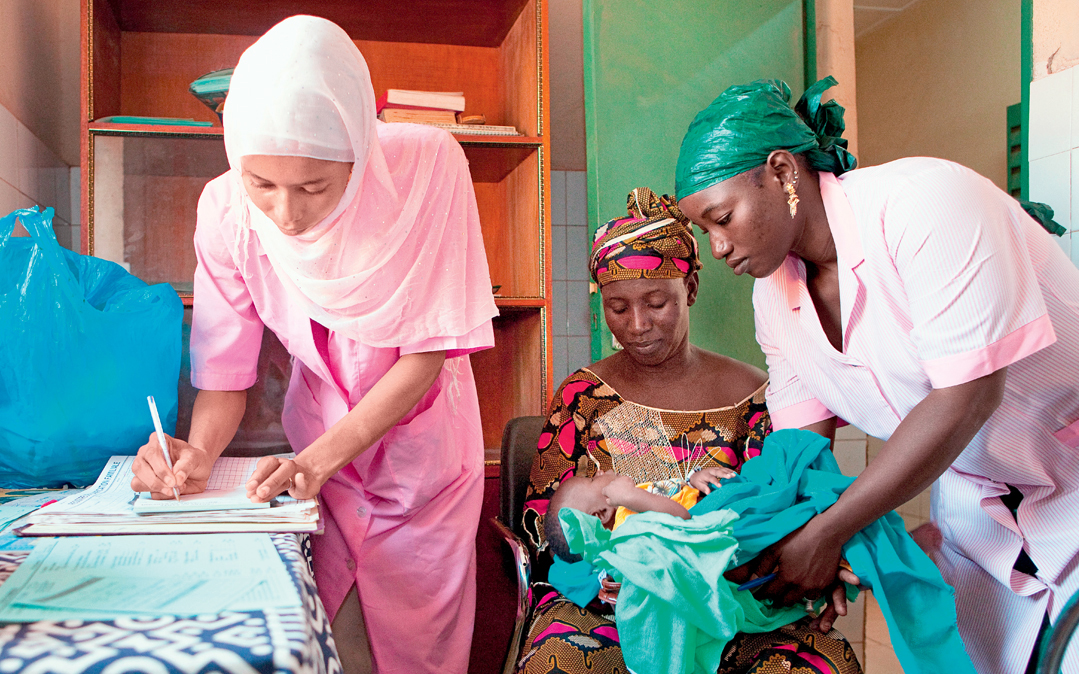
A woman is attended to by a doctor and midwife at a reproductive health clinic in Bamako, Mali. Photo by Jake Lyell/Alamy Stock Photo
This new model recognizes that marginalized women don't just need the ability to choose whether or not to have children. They need better health care during pregnancies. They need education and jobs to help support their families. They need freedom from genital mutilation and child marriage. Promoting gender equality is crucial on its own, Schensul says, but it has also proved more effective than draconian policies at curbing growth.
Internationally, funding for family planning dropped from $723 million in 1995 to $338 million in 2007, while investments in maternal and child health, and HIV treatment and prevention, rose. The reasons for the decline were varied: The apocalyptic famines had never come to pass. There was stiff opposition to public funding for contraception from powerful players like the Vatican and the U.S. government under George W. Bush. And the coercive and abusive policies of the past had given the field at large a bad rap.
The reduction in funding didn't reflect a lack of ongoing need, however. Today, an estimated 225 million women in developing countries worldwide would like to prevent or delay pregnancy but are not using effective contraception. Still, broadly speaking, the evidence suggests that the women-first approach has been working. A recent report by the UN secretary-general said that between 1990 and 2010, the enrollment gap between boys and girls in primary school was essentially eliminated in many countries, and maternal mortality fell by nearly half. The global fertility rate, meanwhile, declined by 23 percent. Between 2010 and 2015, the population grew by 1.15 percent per year, down from 1.52 percent 20 years earlier.
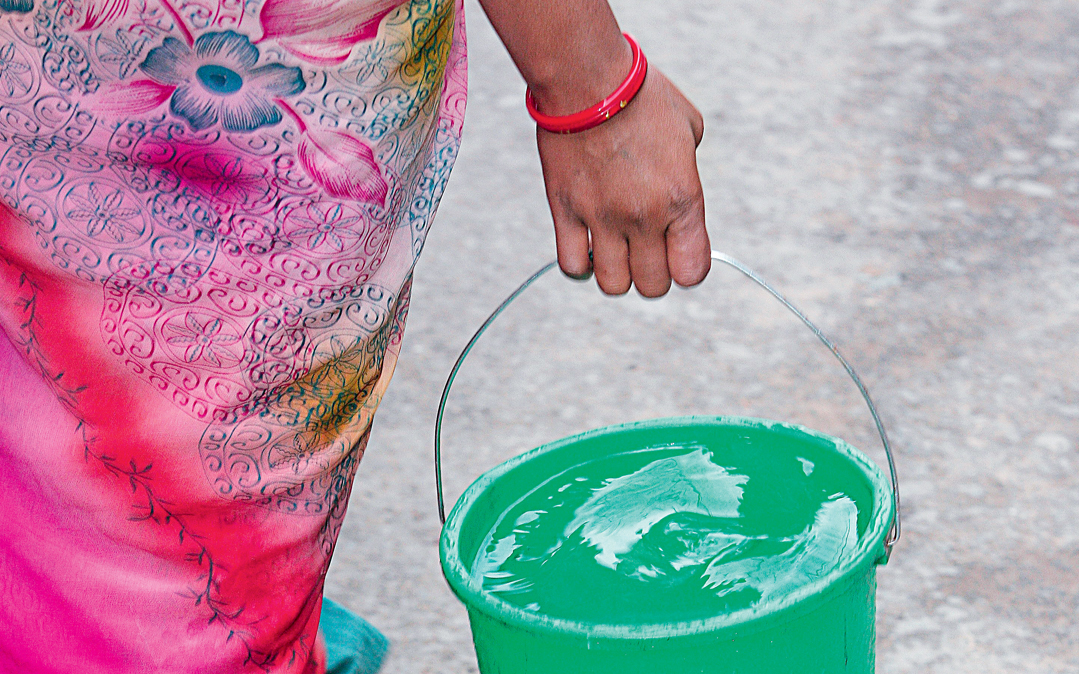
A woman carries water in Kathmandu, Nepal. | Photo by Pascal Deloche/Godong/DPA via Zuma Press
None of this means that women's empowerment is a panacea for the climate crisis, however—far from it. The connections between population and climate change are complex and less linear than one might assume. While it's true in the long term that fewer people will likely result in fewer carbon emissions, Schensul says, "it's a long and winding path, and it depends on many things."
That's because the extent to which each new person contributes to the emissions problem varies dramatically according to where and how well they live. Niger, which has the highest fertility rate in the world at 6.79 children per woman, also produces very few per capita carbon emissions. (Only about 14 percent of the population has access to electricity.) The United States produces fewer babies—1.87 per woman—but far more carbon emissions. At current rates, it would take a person from Niger about 200 years to produce the carbon the average U.S. resident emits in one year. So slowing population growth in Niger won't do a lot to help deflate the global carbon bubble.
These statistics show that, from a climate perspective, Pope Francis's outrage about the excessive consumption of the few is justified. "Whatever the population trajectory, you've got to deal with the energy base and consumption patterns of the population," Schensul says. "Right now, there are about 2.03 billion people in the world who make enough money to really be considered as contributing to climate change. It doesn't take that many people to create a big problem."
Where Francis's argument falters is in casting this as an either-or issue. Consumption matters, but so do numbers. In 2010, Brian O'Neill, a scientist at the National Center for Atmospheric Research, published a study analyzing how low, medium, and high rates of population growth might affect emissions this century. His models accounted for differences in consumption in various regions as well as demographic factors other than growth, such as urbanization. He found that if the population grew at a moderate pace as opposed to a rapid one between now and 2050, we'd prevent about 1.7 gigatons of carbon emissions annually by that year—equal to about one-fifth of the reductions needed to avoid the worst impacts of climate change.
The difference becomes even more apparent over time. In 2100, a population that had grown moderately—to around 9 billion people rather than nearly 14 billion—would emit seven gigatons less carbon a year. In industrialized countries like the United States, O'Neill found, smaller reductions in growth resulted in bigger emissions benefits. But slower growth in developing countries mattered, too, particularly in India and China. Population "is not decisive for the climate issue," O'Neill says, but it is significant.
The cruelest reality of climate change is that those least responsible for creating the problem—poor people in developing countries—are likely to suffer the most from its fallout. And in some places, rapid population growth and poverty could make dealing with environmental disruption more difficult.
Consider the Sahel, the southern edge of the Sahara Desert stretching from the Atlantic Ocean to the Red Sea. Populations are growing more quickly in some countries there, like Niger, than anywhere else in the world. By 2050, the region's population could triple, from around 100 million to 300 million. The area will also be hotter, by as much as 7° to 10°F. Already, between 12 million and 18 million people are chronically underfed, and higher temperatures will make farming more difficult, especially if the monsoon rains that farmers depend on become more erratic.
The low status of women in this region has contributed to the rapid rate of population growth, says Alisha Graves, cofounder of an initiative on the Sahel at the University of California at Berkeley. Child marriage is common, and female genital mutilation is part of some cultures in the Sahel. Women who marry young often drop out of school, which limits their future economic opportunities and increases their risk of dying during or soon after childbirth. There is also a significant unmet need for family-planning services; somewhere around 25 percent of women in the region would like to have fewer children or space their children farther apart, but they have scarce access to the information, resources, and social support needed to do so. A leading cause of maternal mortality is unsafe abortion.
The booming population and changing climate in the Sahel are a recipe for humanitarian crisis, says Malcolm Potts, also with the Berkeley initiative. The threats that climate change poses underscore the urgent need to invest in the well-being of girls and women, he says. Add infrastructure for agricultural adaptation, such as water storage, and you've got a start. Change can occur, but right now "we don't have the will, and we don't have the money," Potts laments.
Climate change may intensify hardships that women already experience. But exactly how varies community to community, according to Nalini Singh, a program manager with ARROW, an organization that researches and advocates for women's sexual and reproductive health and rights in the Global South.
ARROW recently studied the issue in eight countries. It found that in Nepal and Laos, women are walking farther to fetch clean water for their families. If they are pregnant, they might have more pain and discomfort, exacerbated by poor nutrition, since droughts have made gardening more difficult and traditionally women eat last. In a fishing community in the Philippines, women reported that waters had warmed and fish had migrated elsewhere. The Philippines is a deeply Catholic country, and rural women in particular have little or no access to contraception, Singh says. As fish stocks become less reliable, it's harder to support large families. In some cases, men leave the village in search of other work, so their wives are bearing more responsibility for day-to-day family life. In Bangladesh and Pakistan, more frequent floods and cyclones have left pregnant women with poor or nonexistent health care and delivery services. Women are also more vulnerable to sexual violence during and after disasters.
"When women themselves compare their own livelihoods and lifestyles, they say they are worse off now," Singh says. Their choices and decisions are already limited by poverty, she adds, and when climate change leads to lost livelihoods and resources, it exacerbates already difficult circumstances.
Still, aid and advocacy work that marries women's rights and environmental concerns must be done carefully to avoid the injustices of the past, cautions Jade Sasser, assistant professor of gender and sexuality studies at the University of California at Riverside. Sasser says the idea that empowerment is a win for women and the environment "sounds good," but only will be if it isn't narrowed to providing access to contraception and abortion. "That's really not the only form of empowerment that women need in order to have happy, healthy lives," she says. To support justice for women means supporting their right to have children, as well as to not have them, while offering an array of health services. "Given their full choice, not all women would choose to have two children or fewer."
On the same day last September that the pope called for climate action on the White House lawn, he dropped in on the Little Sisters of the Poor, who were plaintiffs in the Supreme Court case challenging the mandatory coverage of birth control in the Affordable Care Act. A Vatican spokesman said the pope made the visit to show support for their case. The two events of the day didn't seem related, but in a way, they were. Francis's call for climate justice and his groundbreaking papacy thus far are missing something: meaningful progress for women.
Last fall, Francis convened a group to consider issues like divorce and contraception, which led him to issue new papal proclamations on the family in April. In them, he spoke in favor of gender equality and choice in family size, and he didn't expressly forbid the use of contraception—but neither did he condone it. Meanwhile, since Pope Francis took the helm, the Vatican has continued to lobby against expanded access to contraception and abortion. For instance, it's kept up its fight against a government effort to provide universal access to birth control in the Philippines.
"Some Catholics have the impression that everything has changed with Pope Francis," says Jon O'Brien, president of Catholics for Choice, which advocates for reproductive rights. "The problem with this story is that it's not true." When it comes to sexuality, procreation, and the status of women in the church, it's business as usual in the Vatican, O'Brien says.
The population advocates eventually came around to recognizing the centrality of women's rights. Environmental activists are coming to recognize it, too. But will the Vatican? The church's willingness to do so will be one important test of how truly radical Francis's reign turns out to be.
This article appeared in the September/October 2016 edition with the headline "People and the Planet."
WHAT YOU CAN DO
Learn how the educational efforts of the Sierra Club's Global Population and Environment Program are working to achieve women's empowerment and increase access to reproductive health services: sc.org/population.
 The Magazine of The Sierra Club
The Magazine of The Sierra Club



